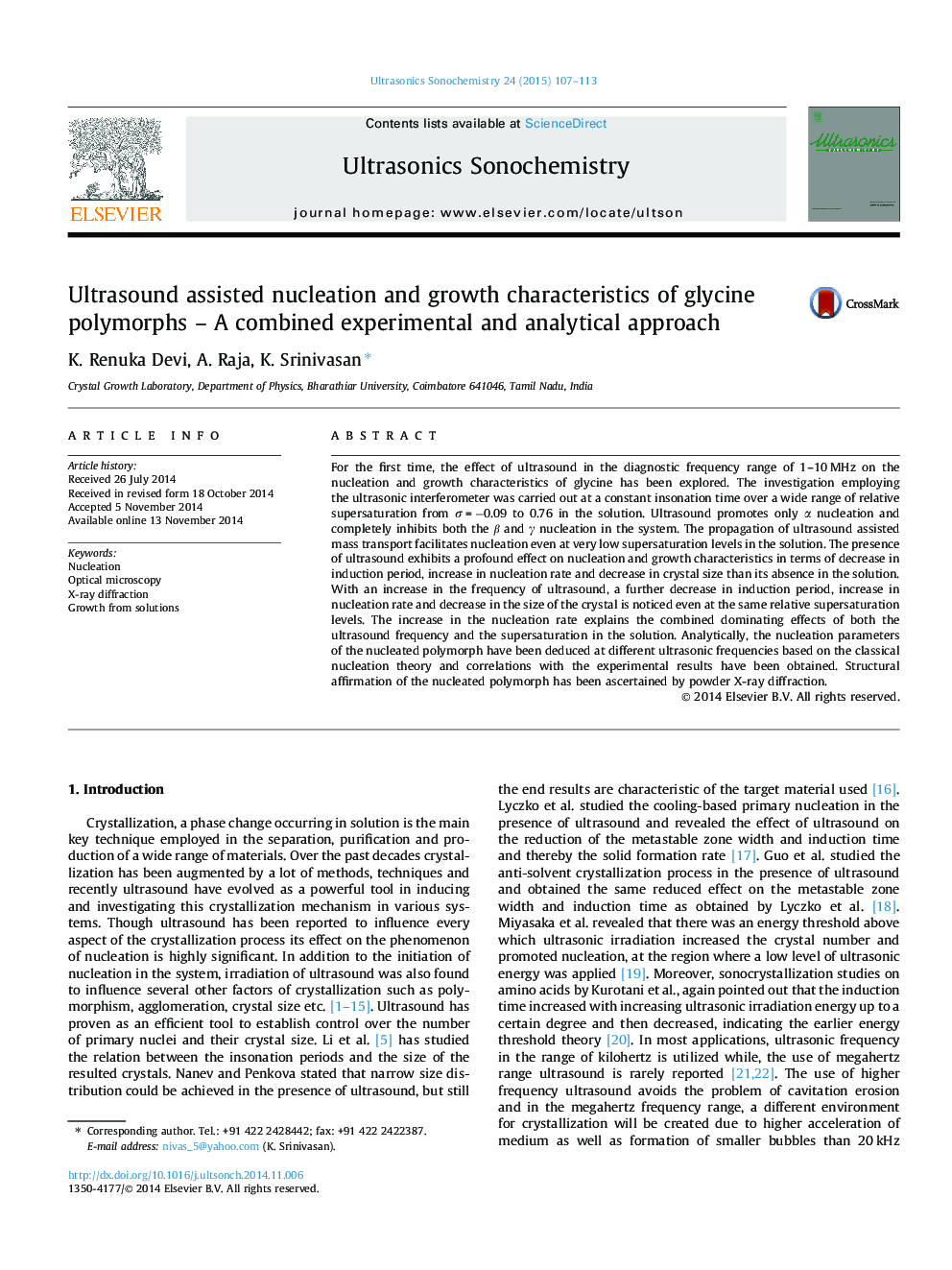| Article ID | Journal | Published Year | Pages | File Type |
|---|---|---|---|---|
| 1266701 | Ultrasonics Sonochemistry | 2015 | 7 Pages |
•Presence of ultrasound induces nucleation even at lower σ in the solution.•Sonication exhibit a profound effect over the nucleation characteristics of glycine.•Sonication decreases the induction period and increases the nucleation rate.•Narrow crystal size distribution is achieved with increasing ultrasonic frequencies.•Analytical approach employed proved successful in correlating experimental results.
For the first time, the effect of ultrasound in the diagnostic frequency range of 1–10 MHz on the nucleation and growth characteristics of glycine has been explored. The investigation employing the ultrasonic interferometer was carried out at a constant insonation time over a wide range of relative supersaturation from σ = −0.09 to 0.76 in the solution. Ultrasound promotes only α nucleation and completely inhibits both the β and γ nucleation in the system. The propagation of ultrasound assisted mass transport facilitates nucleation even at very low supersaturation levels in the solution. The presence of ultrasound exhibits a profound effect on nucleation and growth characteristics in terms of decrease in induction period, increase in nucleation rate and decrease in crystal size than its absence in the solution. With an increase in the frequency of ultrasound, a further decrease in induction period, increase in nucleation rate and decrease in the size of the crystal is noticed even at the same relative supersaturation levels. The increase in the nucleation rate explains the combined dominating effects of both the ultrasound frequency and the supersaturation in the solution. Analytically, the nucleation parameters of the nucleated polymorph have been deduced at different ultrasonic frequencies based on the classical nucleation theory and correlations with the experimental results have been obtained. Structural affirmation of the nucleated polymorph has been ascertained by powder X-ray diffraction.
